
PATOUT
-
Posts
110 -
Joined
-
Last visited
Content Type
Profiles
Forums
Blogs
Gallery
Events
Store
Posts posted by PATOUT
-
-
Hi Nick
Thanks
Regards
Patout
0 -
-
Hello Nick
ThanksReally what a pleasure it is to have an answer to all my questions,
and with in addition "cerise sur le gâteau" as we say in France (icing on the cake), the name of the manufacturer.
I didn’t understand why we found this medal with and without ribbon I didn’t know there were three kinds of badges, it's clear now !!
thanks for the photo of the diploma that I had never seen, as well as for the date of end of production of this badge.
Regards
Patout
0 -
Hello ! happy new year dear fellow collectors I wish you that the year 2020 was suitable for you to find good discoveries....... or nuggets, !!!!
For me the dream came true I finally found the gold medal of imperial aviation society I’d been looking for years.
And luckily this medal is complete with its case, and will be perfect next to the silver gilt model I own.
I have a request about the inscription inside the lid. Can someone translate it ? and especially the left column
Nick said : another possible scenario "for long meritorious service" but, does this inscription refer to a higher class or a special service? that would differentiate this model from the basic silver gilt model ? because I do not know if the case and the inscription are identical on the basic model (silver gilt) and the gold one.
Most of the models encountered are from the Taisho era, is this medal was distributed a lot under the Showa era or was its manufacture stopped? and when?
Furthemore It seems to me that the medal (with ribbon) was reserved for foreigners and the version badge (without ribbon) was given to Japanese.
This because I have never seen a picture of a Japanese pilot (civilian or military) with this medal. What do you think of this hypothesis ?
I see that no one presents a picture of the diploma accompanying the medal is it because is it because no one among our colleagues has it ?
Regards
Patout
0 -
Hi Nick,
thank you very much for these answers,
for your investments and the time spent.
Regards
Patout
0 -
I have in my collection these three almost identical boxes for documents of Showa era.
I am only able to understand "imperial army" without knowing the rank and function of the soldier and their names. If anyone can translate ?... this help will be greatly appreciated.
Then I have a question for the experts about the colour of the cord (ribbon, string ?) around these boxes.
As we know the name "order of merit" is used for both order of R.S. and S.T.
In this case where the box mentions "ONLY" one medal, can we conclude that it is the colour of the cord that allows to indicate which order it is (red for R.S. and purple for S.T.) ? right or wrong ?
see below : 7th class of S.Treasure with purple cord?
Regards
Patout
0 -
Hi Nick,
Once again, thank you for all this information.
Everything can be no more precise or detailed.
Everything is there !!
The photo of the small booklet on the lacquer shop with its history is also very interesting.
very cordiallyPatout
0 -
Good morning to you all, dear colleagues
I present to you a sakasuki which seems to me to be of the red cross, inside the box in kiri is a small patriotic flag.
It seems to me that the big kanji at the center of the cup 誠 means: integrity, sincerity or fidelity .
The diameter of this SAKAZUKI is 12.5cm and the weight is 35g.
The manufacturer’s label is still under the lid of the box, but unfortunately I don’t know how to translate it...
If anyone can tell me more about this object.............. I’m willingPatout
0 -
Hi Nick,
Thanks a lot for this photo that I will keep in my archives...
have a good nice weekend,
Regards
Patout
0 -
Hello Nick
Thanks a lot for this informations
I’ve never seen a box in eighth grade in Rising sun or sacred treasure... have you seen one ? or have you one in your collection ?
Regards
Patout
0 -
Hello Nick,
Always about Tamatebako Miyake….
I have in my collection a sacred treasure 7th class with a T.M. case (already presented on this forum) but I have never seen a case of T.M. for a 8th class sacred treasure .!! so do you think ? do you know ? if the 8th class had existed with this kind of box ?
and same question about rising sun, what is the lowest class existing for this type of case ?
It seems to me that the lower classes are the hardest to find, and for my part I have never seen a case T.M. for a class lower than the 6th class for the order of the rising sun and for a class lower than the 7th class for the sacred treasure.
Regards
Patout
0 -
Hi Nick,
Thank you nick for this additional information.
With a photo it’s better, realy nice piece.
Best,
Pat
0 -
Hi Nick,
Thank you for this answer.
Regards
Patout
0 -
Hello to all dear passionate colleagues.
I don't know much about this medal, is it a good one ? or one of several chinese copies.?
About the text on the reverse there are several versions : some people say it's the biography of S.Y.Sen, others that it is the text of his last letter to the central commmittee of soviets, just before his death ? what do you think about it ?
Thank you to everyone who will take time to answer to me
Regards
Patout
0 -
Hi Nick,
Thanks again for his invaluable help.
It seems to me that this document is quite rare? What do you think about that ?
History_Geek :Hi,
the dimensions of this document are 185.5 x 53.5 (in cm)
Regards0 -
Hi all,
I know well as all of you the document (diploma) given with the coronation medal of Emperor Taisho but I did not know this kind of document in "hanging scroll".
It seems to me that this document is nominative, can you confirm that ?, and tell me to whom it was assigned to ?
Can you tell me in the main lines what the text says under the photocopy of the diploma and inside the small frame at the bottom of the document?
Could each recipient of the enthronement medal claim to receive this type of document ??
or is it a personal purchase from the recipient? ................or is this a special distinction or recognition on the part of the Emperor?
Thank you for your kind assistance.
Patout0 -
Hi Nick,
Thanks you for everything..
pity that there is no database available.
I just had oral informations from the family but no writing... no writing either in the family, and the family castle has been sold.
It would be very interesting to know the reason invoked by Prince Morimasa himself to give Georges de Tressans this medal.... too bad!!
Best,
Patrick
0 -
Hi Nick,
I still need your help in translation... I'm very curious to know where in the japanese document the name of Georges de la Vergne de Tressan is written ?
Have these many first names ( Georges Antoine François Ludovic) been translate or only the first ?
Thanks for your involvement
Patrick
0 -
Hi Nick,
Sorry for this misunderstanding.... I answered too quickly without looking at the number.
If you can find informations in the japanese numbering system for foreigners they will be welcome and much appreciated.
NB:
On my side I could not find anything with the (french) number of registration "31 212" for foreign order.
There is only a database for the members of legion of honnor and nothing else.
Regards,
Patrick
0 -
Hi Nick
Thank you for all this additional information.
Yes , this number is a specific registration number for foreign orders
In France you can not carry a foreign order without the authorization of "la Grande Chancellerie", this one especially monitor the obtaining of foreign orders that can be confused with French orders.
In the middle of the 20th century for example many French easily obtained (sometimes by paying) the order of Christ of Portugal... that he pretended to be a legion of honor (same red ribbon)...so to avoid that you must have the authorization to carry foreign order.
Patout
Hi "Egorka"
Thank you for your interest in this testimony.
When we are interested in a character that we do (modestly) in some way out of the shadows and that we discover its richness, we can only be humble and respectful in the face of certain very fulfilled lives.
Georges de Tressan also had the time to publish a work always reissued which earned him the congratulations of his staff .Patout
0 -
Unfortunatly no mark at all including the part of the rim hiding under suspension leaf.
Of course, you can share this group to your russian colleagues.
Regards
Patrick
0 -
Nick
I hope these photo have answerd to your request, do not hesitate if you want additional photos.
Friendly
Patout
0 -
Hi Nick,
Here are some other photos:
Portrait of Georges de Tressan
Photo of Georges de Tressan posing for her portrait (reproduction of a photo belonging to the family)
Photo from roll (tableau d'honneur des morts) of the french deads of the great war (1914/1918)
next ones to come
The next...close up of the french document, comparison size documents : japanese certificate (as you know) 46x59 and french one 39x49 in "cm".
Registration number of the "grande chancellerie" stamped at the back of the Meiji document (translation : grand chancelery of the legion of honor, noted for auhorisation, registered at the ???? (slightly erased text) foreign orders, under the number 31212)
0 -
1 ° / Georges Antoine François Ludovic of the Vergne de Tressan (1877/1914):
came from a very old aristocratic military family, and like his father (1845/1911) captain of the 21st hunter, he chose to embrace the military career.
It was while visiting the Japanese Pavilion during the World Expo of 1900 that the young St Cyrien discovered a devouring passion for Japanese art and culture. This exhibition will be for him the revelation of his short life. He therefore decides to devote himself in parallel with his military career to the knowledge of this civilization hitherto unknown to the French. Japan's desire for openness to the West advocated by Emperor Meiji in order to emerge from the feudal era of samurai and to move towards the modern and industrial era was relayed by some intellectuals, collectors, artists , "japonistes" or simply "curious" French.
Our young lieutenant decided to learn the self-taught language of the country of the rising sun that he mastered in the year 1913. From then on, recognized by all the experts, scholars, intellectuals and "Japonistes" he is frequently asked to bring his expertise on Japanese objects.
He also collaborates with national museums for exhibitions and writes many reference books:
Exhibition of Japanese saber guards Palais du Louvre 1910
Exhibition of sabers and Japanese "inro" decorative arts museum 1911
Exhibition of Japanese lacquered museum of decorative arts 1912 etc ... etc ...
(NB: He will get after his death the price of the French Academy (in 1916) for his book "The evolution of the Japanese sword guard" written under the pseudonym Tei-San)
We will not mention here all of his work, just note that several issues of the newsletter of the Franco-Japanese society pay tribute to him (since 1912) and more recently the Japanese academic Asuka Minami (universe Sagami) has dedicated a article (see: minami_asuka@isc.sagami-wu.ac.jp).
2 / Prince Nashimoto Morimasa:
Like princes of blood the prince must make a military career. He was appointed lieutenant to the 39th Infantry Regiment of the Japanese Imperial Army in 1899
In 1903 he joined St Cyr to complete his training officer but must leave the school in 1904 to make war against Russia (1904/1905). He returned to France in 1906 with the rank of commander, this second stay will last from 1906 to 1909.
3 / Meeting between Georges Antoine and Prince Nashimoto Morimasa:
In 1906 our young lieutenant is in the 39th infantry regiment of Rouen. His knowledge of the culture, the civilization and the Japanese habits and customs makes that naturally it is affected by the staff to the accompaniment of prince Morimasa. Lieutenant Tressan will establish friendly relations with Prince Morimasa and even says that it helped him to decipher Kanji in ancient Japanese on tsubas.
4 / The decoration of the rising sun of 5th class:
It was for the proselytism he showed to make known and recognize the Japanese culture that Prince Nashimoto Morimasa (future marshal, member of the staff of the Imperial Army under Hiro Hito) decorated in 1907 (Gregorian year) the December 28 Lavergne de Tressan's lieutenant of the order of the rising sun of 5th class.
The first decoration that receives our French lieutenant is thus a foreign decoration. The years pass 1908 ... 1914 our lieutenant becomes a captain of staff. He was assigned to the 41st Infantry Regiment when he entered the war.After being surrounded by the enemy, he was killed at the head of his regiment on October 4, 1914 in Neuville-Vitasse (Pas de Calais) at 37 years old.
He is quoted to the order of the army "Repelled all enemy attacks for 4 days and 4 nights and did not lose an inch of his positions".
He is Knight of the Legion of Honor posthumously. He had however during the few months of combat been made cross of war with palm by 2 times.
Photos :
Georges de Tressan portrait; Japanese document, authorization to carry foreign orders of February 27, 1911 by "grande chancellerie de la légion d'honneur", Translation of the Japanese Embassy 28/12/1907 and regularization? from February 22, 1910.
PATOUT
0


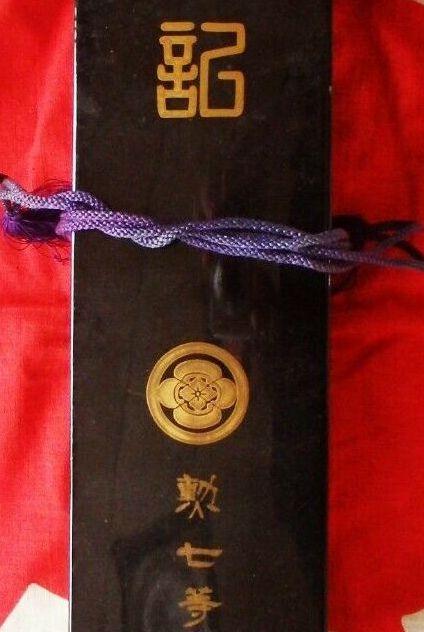
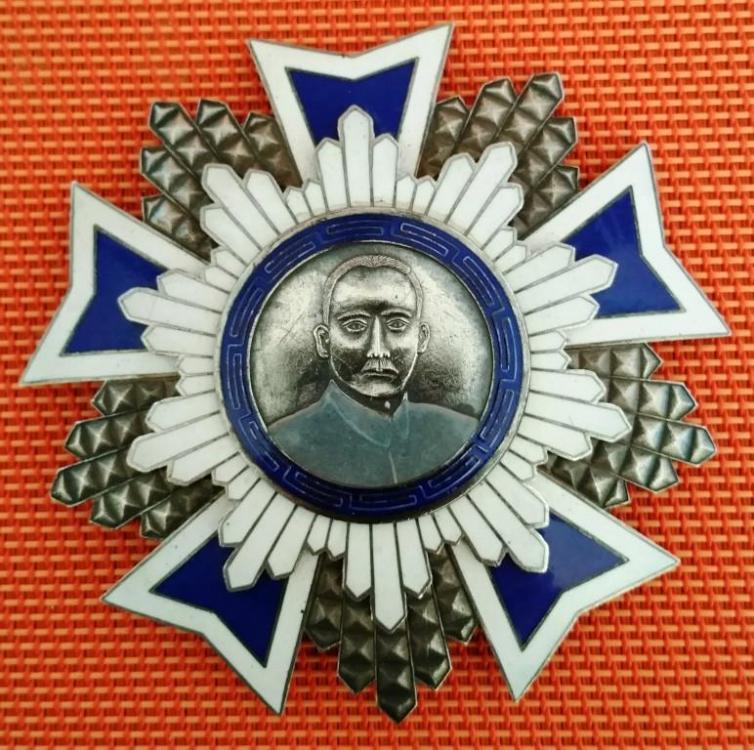

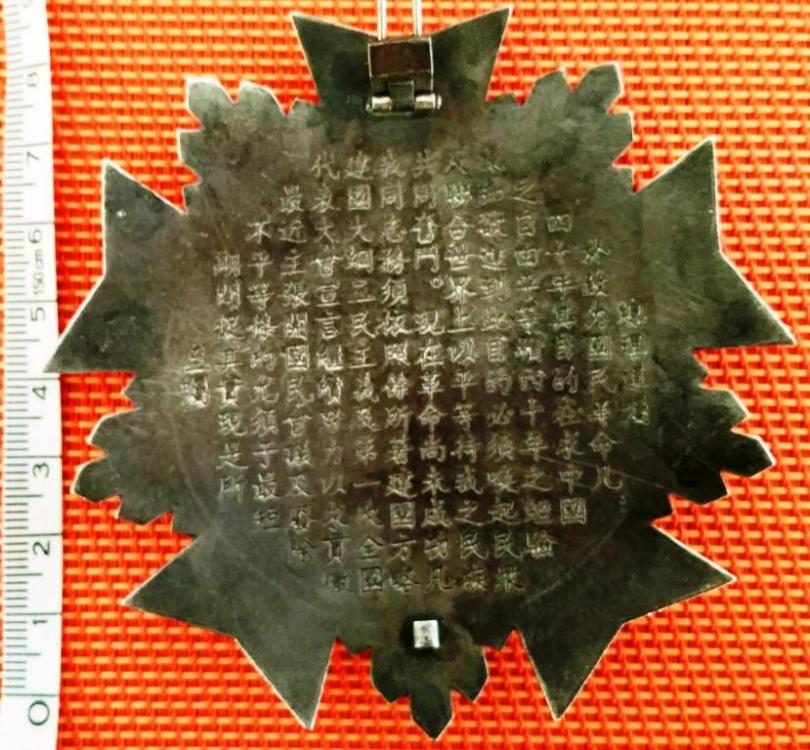

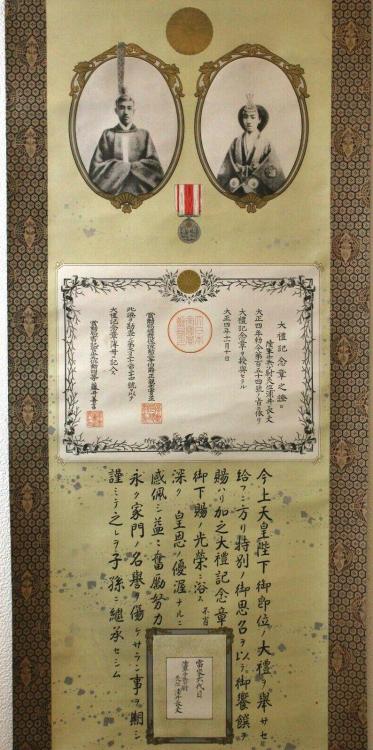



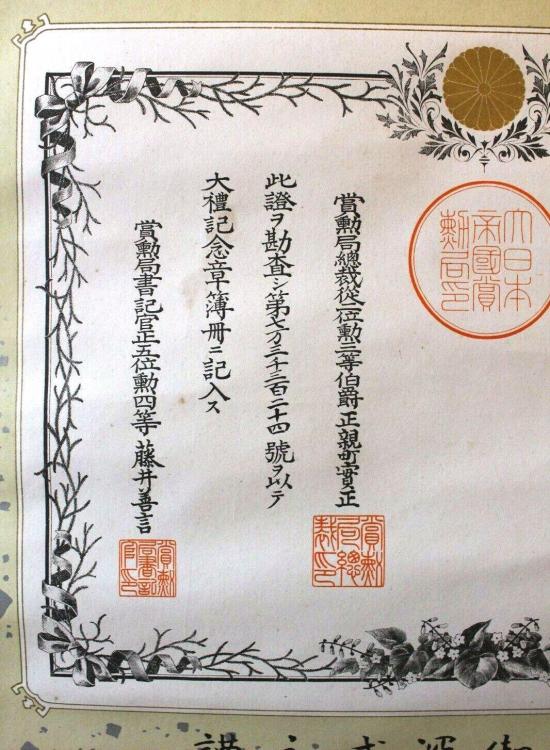
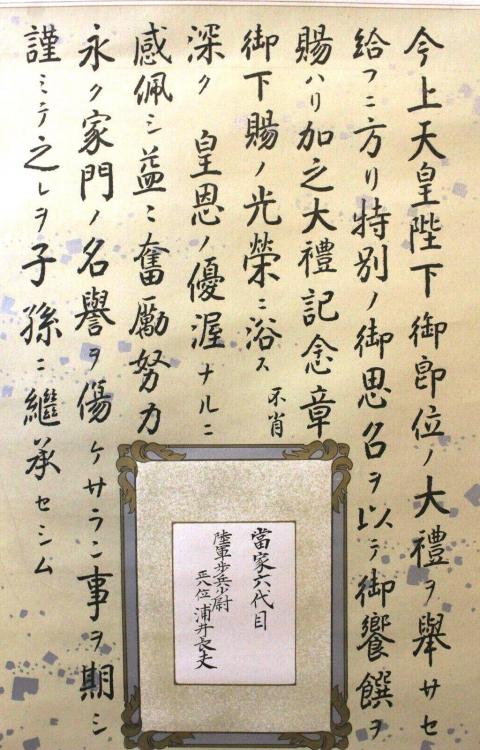
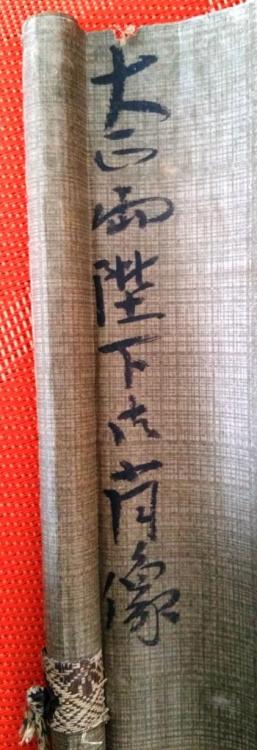


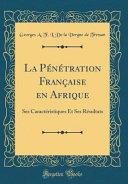
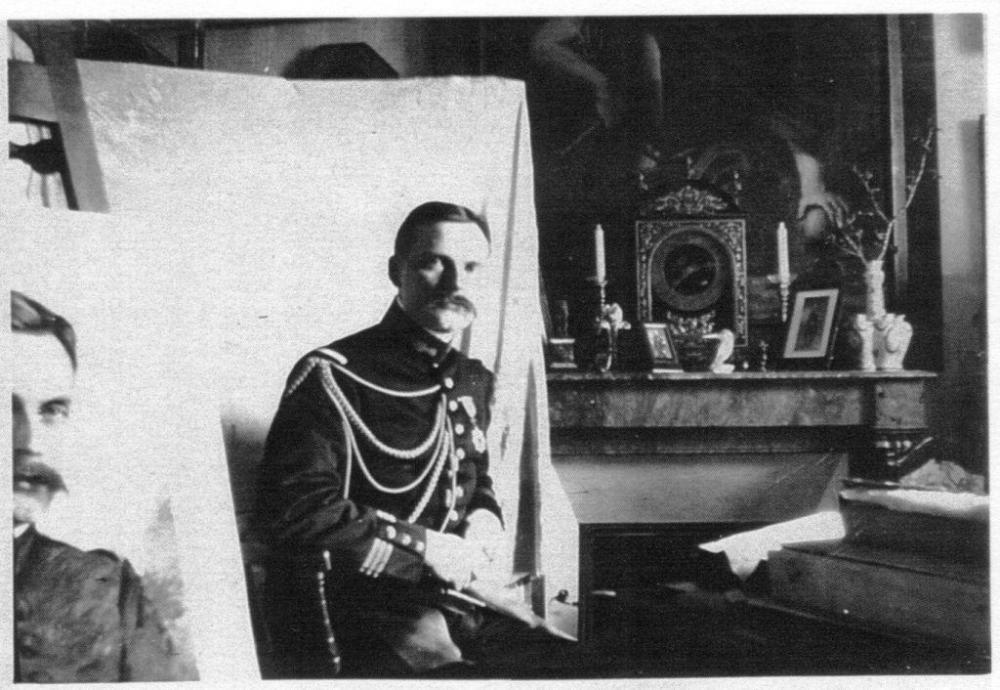
.thumb.jpg.e2970074bb23e850354b6d820e4fc1b3.jpg)
.thumb.jpg.2b721b9c2d6f504a1ebab250e7abd0b9.jpg)
.thumb.jpg.a2b1f6cf870ae9c48e61e468c0c9c007.jpg)

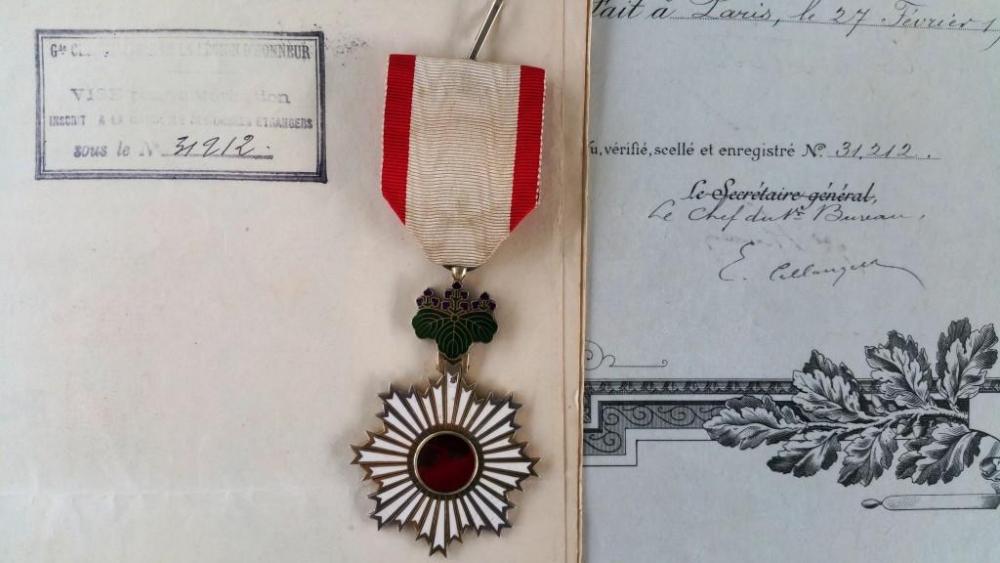
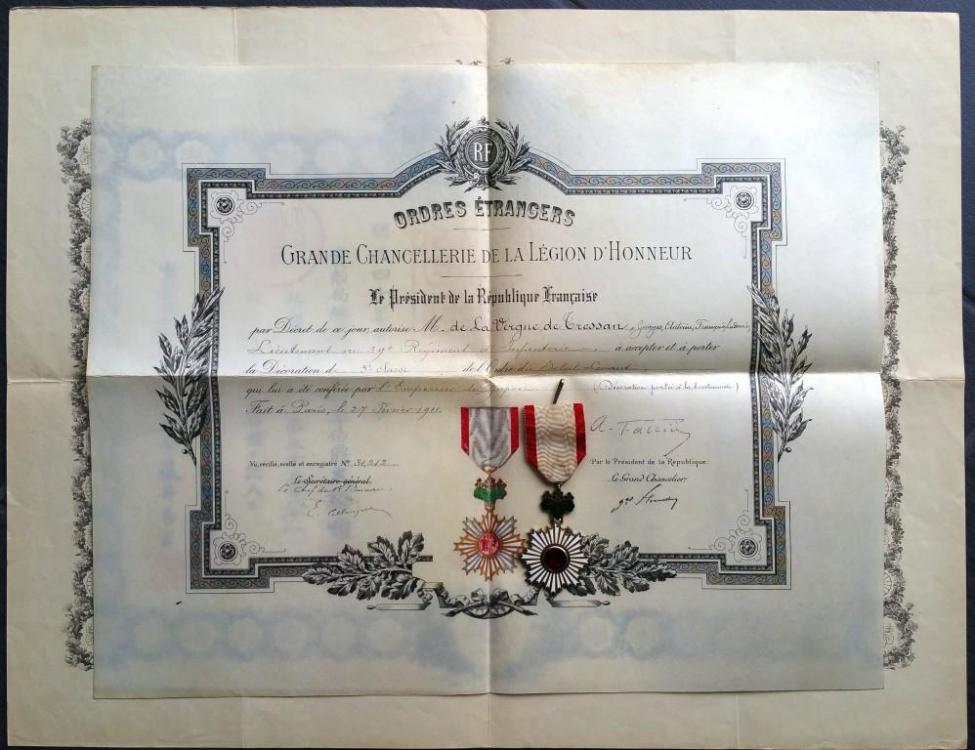
.thumb.jpg.b1f990517964326f1523a9b07270af75.jpg)
.thumb.jpg.32483e7a69d50dfe80d473e26583a74a.jpg)
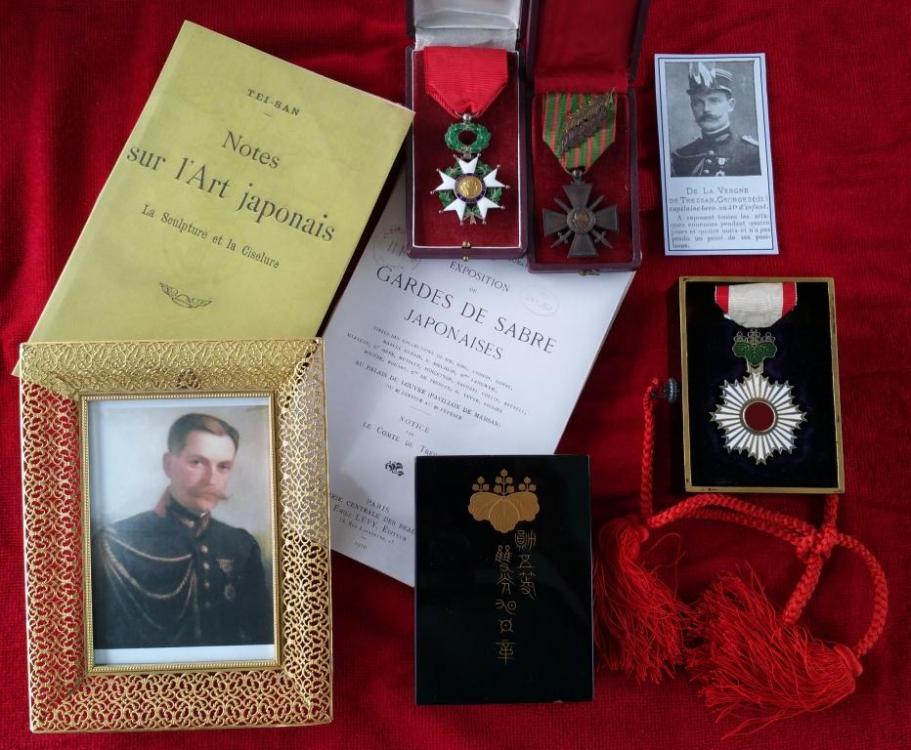
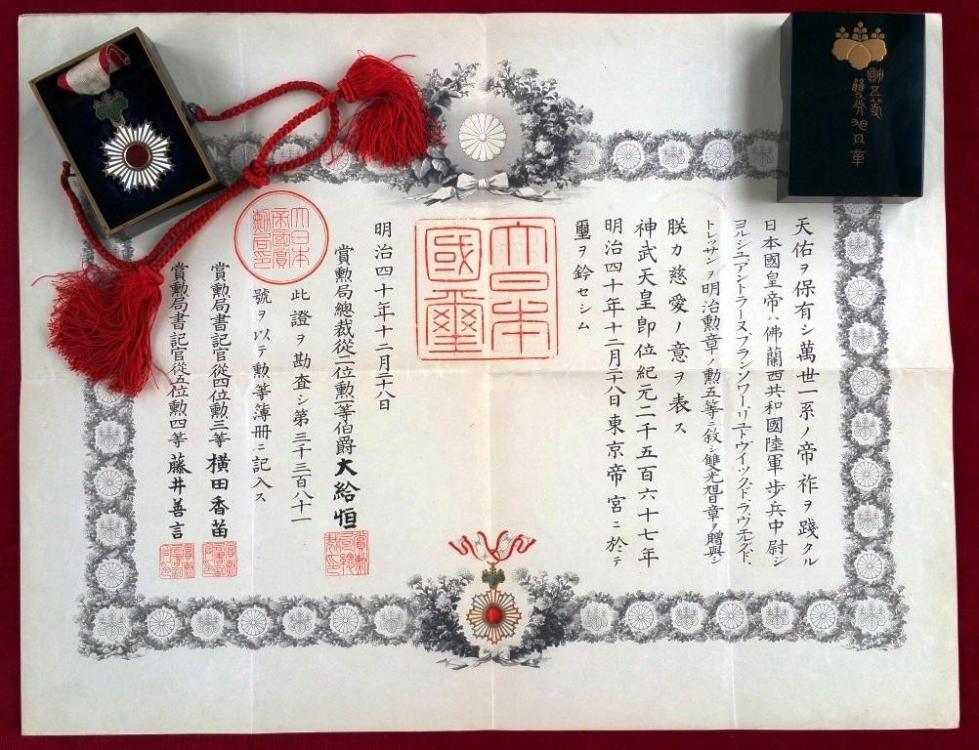
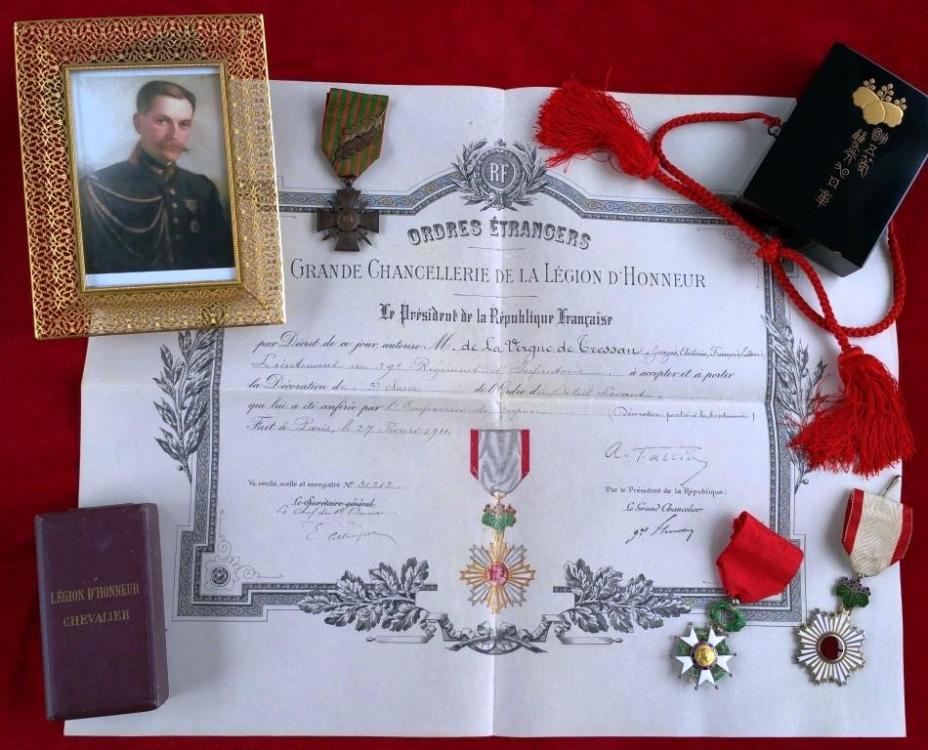
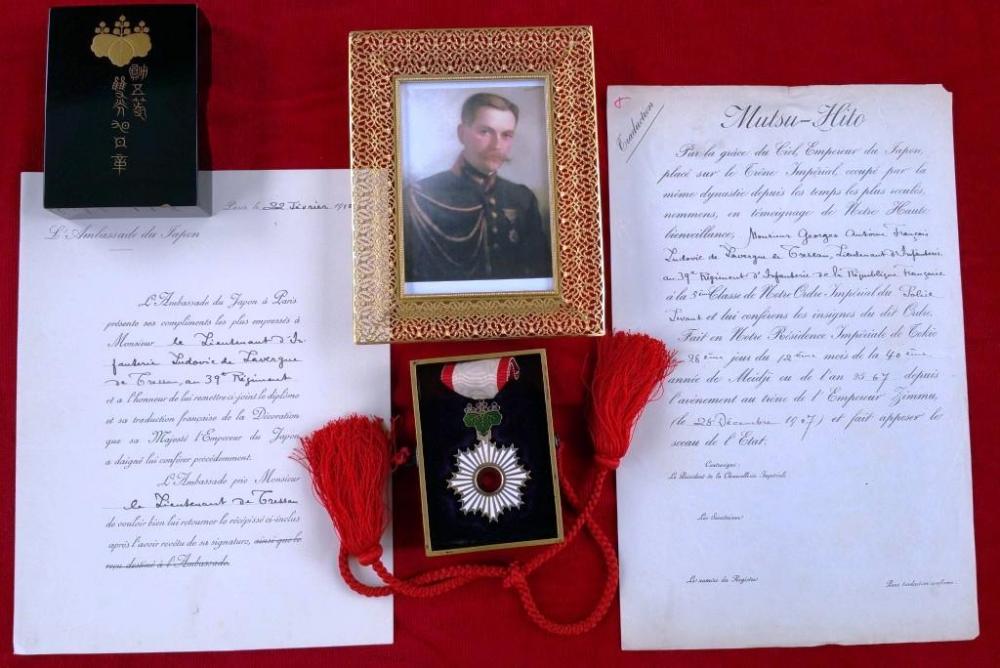
A French captain receives Japanese delegations to France from 1917 to 1920
in Japan
Posted
Born on August 13, 1878, François Nicolas, Charles le Bleu was admitted to the Special Military School in 1899, he left as lieutenant at the age of 25 in 1903.
He was promoted captain in 1914 and was assigned to the general staff of an infantry brigade at the time of the war. He then conducts night reconnaissance near enemy lines in order to define the location of the trenches and map them. During one of these recognitions, he was seriously injured by three shrapnel on 14 June 1915 in front of Angres (Pas de Calais).
He was made a Knight of the Legion of Honour (Journal Officiel of 21/07/1915) and decorated with the cross of war with a silver star and a palm. From then on, he was an invalid of war and was successively attached to the general staff of the military government of Paris (by ministerial decree of 26 November 1915) under the orders of General Maunoury until 1916, then (by presidential decree of 18 January 1917) General Dubail until 1918.
He was finally attached (ministerial decree of 27 March 1920) to the general staff of General Nivelle, a member of the superior council of the war.
He was released from military service on 1 November 1924, and died on 10 March 1963 at the age of 85.
During his career at the General Staff, he was involved in the installation, accommodation and security of foreign delegations at the Allied Conference in July 1917 and the Paris Peace Conference (January to August 1919) which will prepare the signing of the Treaty of Versailles signed on 28 June 1919 and promulgated on 10 January 1920.
On September 12, 1920, he was made 5th class of the rising sun for services rendered. Very curiously, his hierarchical superior General Nivelle receives the same decoration... and especially the same rank: 5th class.!!!
It must be deduced from this that the nickname "butcher" of it, following the tragic affair of the "chemin des dames" battle and the mutinies which followed from it were not at all of the taste and in the mind of the Japanese, it seems probable. The fact that General Dubail was made 1st class of the order of the sacred treasure seems to well corroborate this hypothesis
Below are some pictures (source: Gallica, bibliothèque nationale de France) of the various Japanese delegations from 1917 to 1920:
1/ Presentation of a sword of honour by the Emperor of Japan Taisho, presented by his ambassador in France Keishiro Matsui, at the Grand Palace (2 photos) in Paris on November 29, 1917 (during the war time) to commemorate the Battle of Verdun (end of the Battle of Verdun on December 19, 1916) and raise the city of Verdun to the dignity of a martyred city
2°/ peace conference (January 1919 to January 1920) in front of Trianon Palace on May 7, 1919 arrival of delegations
3°/ Peace Conference the Marquis of Saiongï, representative of Japan
4°/ Peace Conference, Baron Matsui (ambassador) leaves the quay of Orsay
5°/ Members of the Japanese delegation
6°/ French protection around the hosting of the Japanese delegation
Patout